Fly fishing for beginners might seem daunting, but with the right guidance, it’s an incredibly rewarding sport. Fly fishing involves using artificial lures called flies to mimic real insects, attracting fish to bite. At flyermedia.net, we break down the complexities, providing essential knowledge and skills for beginners to confidently start their fly fishing adventures. Discover resources that simplify fly fishing terms and gear, helping you become proficient in fishing techniques.
1. Essential Fly Fishing Gear for Beginners
What gear do you really need when first learning how to fly fish?
While the array of fly fishing gear can be overwhelming, beginners only need a few essentials to get started. Consider these items your bare necessities for a successful fly fishing setup. You will need polarized sunglasses, a fly rod, a fly reel, fly line, a net, leader, nipper, pliers or hemostat, tippet, and flies. Flyermedia.net offers in-depth guides to choosing the right equipment, making your initial investment worthwhile.
1.1. Polarized Sunglasses
Why are polarized sunglasses so crucial for fly fishing?
Polarized sunglasses are arguably the most important piece of equipment next to your rod and reel. These are important for eye protection against flies and errant casts and protection from the reflective glare off the water. These will also help you see fish more clearly. Copper colored lenses cover a wide range of light scenarios when fly fishing. According to experts at Orvis, polarized lenses cut glare, allowing you to see into the water and spot fish.
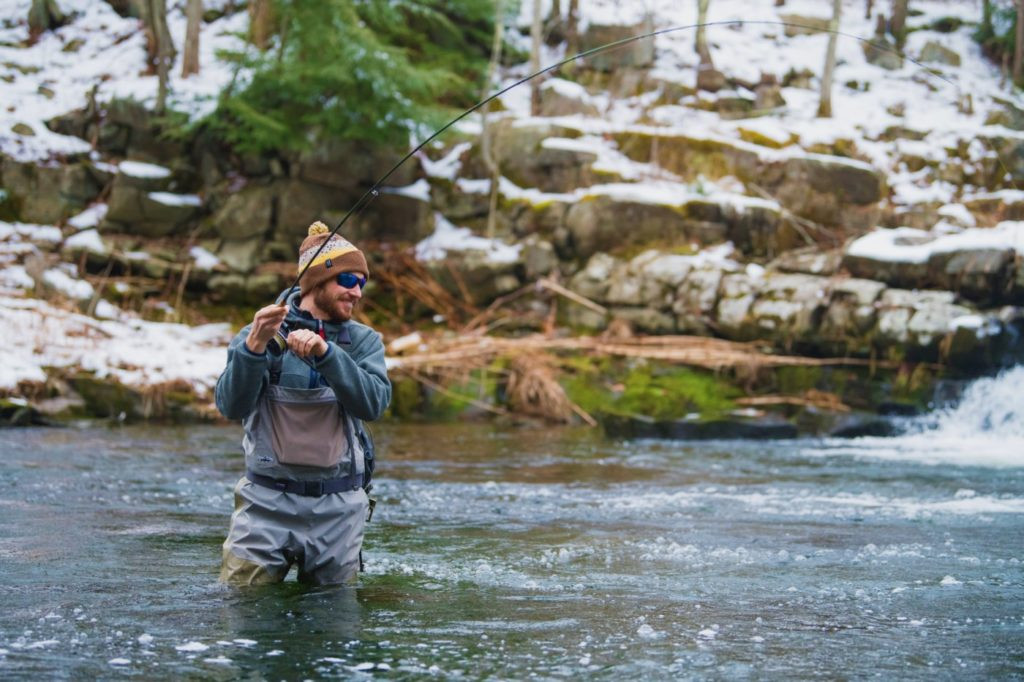 Fly fishing sunglasses
Fly fishing sunglasses
1.2. Fly Rod: Size and Weight
What size fly rod is best for beginners?
A 9-foot 5-weight or 6-weight fly rod is the best choice for a beginner fly fisherman, paired with a matching 5-weight or 6-weight reel and fly line. This setup is versatile for both trout and bass fishing, making it ideal for various fly fishing scenarios. At flyermedia.net, you’ll find reviews and recommendations for beginner-friendly fly rods.
1.2.1. Choosing Fly Rod Weights
How do fly rod weights affect your fishing experience?
Fly rods range from 2-weight for small panfish to 14-weight for saltwater fly fishing. A 1 to 3-weight fly rod is ideal for casting small flies in streams to smaller fish species. Most fly anglers avoid 1 to 2-weight rods unless they are only fishing micro streams and tiny fish. Fly fishermen commonly use 3-weight fly rods for nymphing and dry fly fishing as the sensitivity to takes is more noticeable. Using smaller weight fly rods makes even fighting small fish seem like they are massive, which some anglers prefer for added enjoyment. Heavier rods (7-weight and up) are suited for larger fish like salmon and steelhead.
1.2.2. Choosing Fly Rod Lengths
How does fly rod length impact casting and maneuverability?
Fly rod lengths typically range from 6 feet to 10 feet for trout, bass, and panfish fly fishing. Fly rods 6 to 8 feet are great for smaller streams as they allow you to maneuver areas crowded with brush and trees. Fly rods 8 to 10 feet are great for streams, rivers, ponds, and lakes as they allow you to make longer casts and, with your fly rod, physically reach greater distances to make pinpoint accurate casts. The length of your fly rod should align with the type of water you’re fishing. According to studies at Penn State University, longer rods offer better line control and casting distance on larger waters.
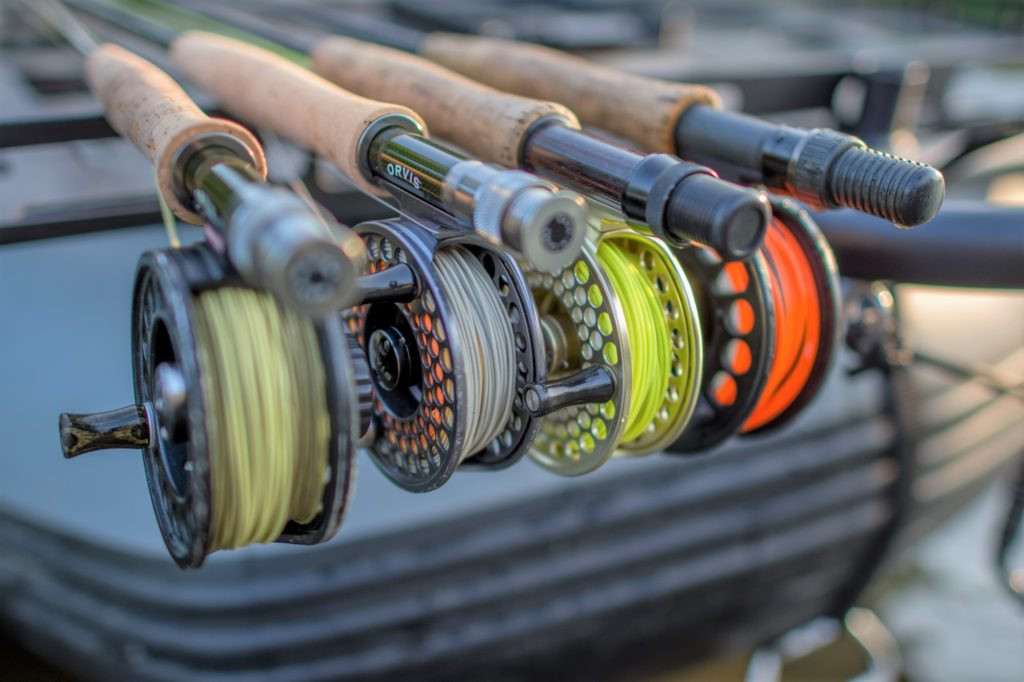 Fly fishing rod
Fly fishing rod
1.3. Fly Reels: Function and Importance
How do fly fishing reels work, and why are they important?
Fly reels primarily serve as fly line holders, although they become more crucial when pursuing larger fish that require a good drag system. A machined aluminum fly reel with a click-and-paw drag system is a reliable choice for beginners. You can explore different types and features of fly reels at flyermedia.net.
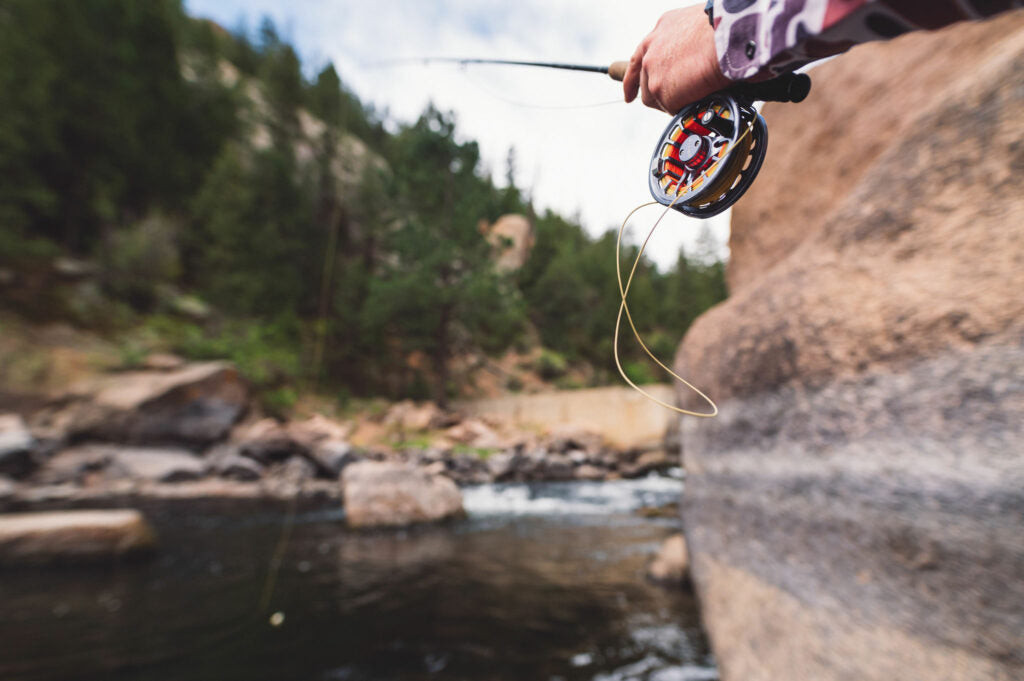 Fly fishing reel
Fly fishing reel
1.4. Fly Line: Types and Weights
What fly line is best for a beginner?
A weight-forward floating fly line is the most suitable option for beginners, matching the weight of your fly rod (e.g., a 6-weight line for a 6-weight rod). According to scientific studies from the University of British Columbia, floating lines are ideal for presenting flies without pulling them under. For example, if you have a 6-weight fly rod you will use a 7-weight fly line. The extra weight of the fly line helps beginner fly fishermen load the rod and make a basic forward cast. Flyermedia.net provides detailed guides on choosing the right fly line for different conditions.
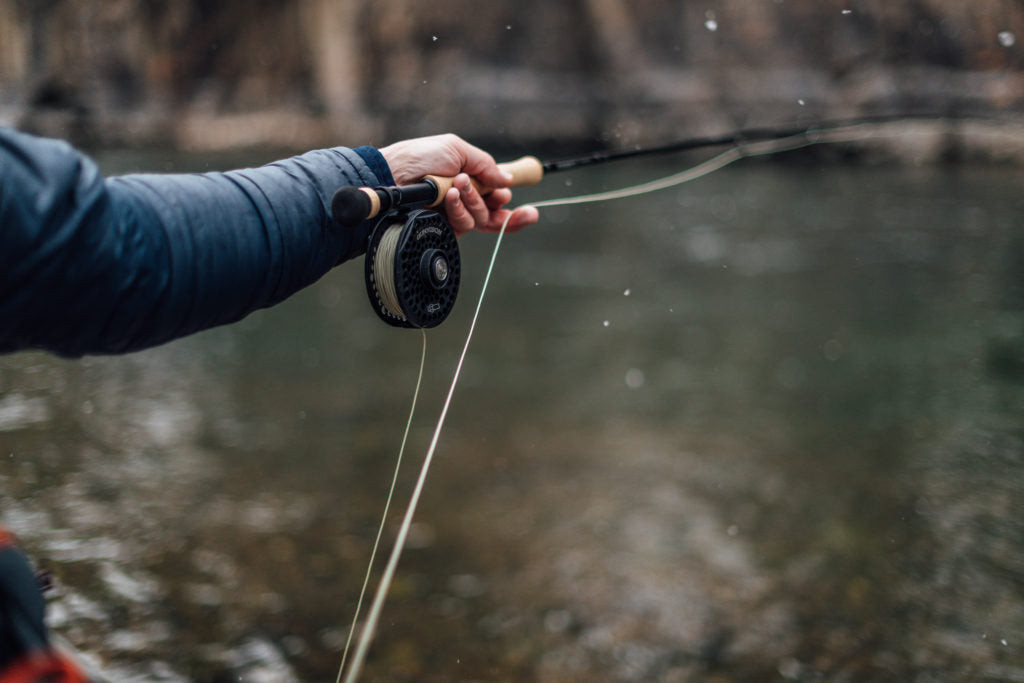 Fly line color
Fly line color
1.5. Nets: Fish-Friendly Options
Why should you use a fish-friendly net with a rubber ghost basket?
Fish-friendly nets with rubber ghost baskets are gentle on fish and prevent your flies from tangling. A rubber net prevents damage to the fish’s scales and slime coat, increasing its chances of survival after release. Look for nets designed to protect the fish and maintain ethical angling practices.
2. Fly Casting Techniques for Beginners
How do you effectively cast a fly rod as a beginner?
Casting a fly rod involves using the weight of the fly line to load or bend the rod, transferring energy to the fly. The three main parts of an overhead cast are the back cast, the pause, and the forward cast. Practice these steps to develop your casting technique. Flyermedia.net offers video tutorials and step-by-step guides to master fly casting.
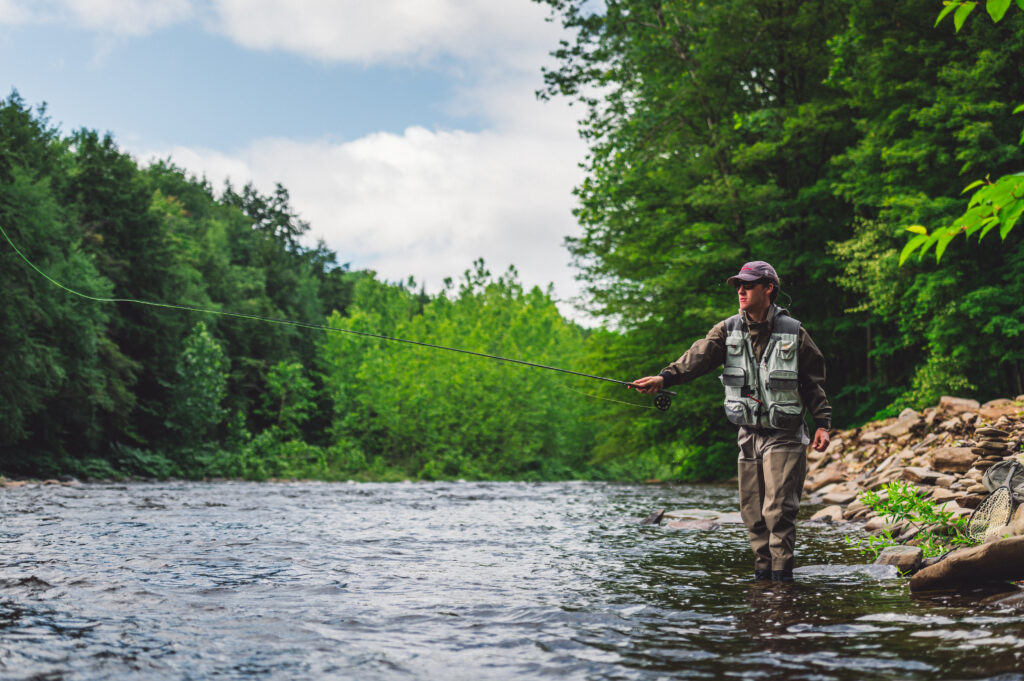 Fly casting technique
Fly casting technique
2.1. The Overhead Cast
How do you perform a basic overhead cast?
To perform a back cast, start with your rod tip as close to the water as possible. Make sure that there is not an abundant amount of fly line out of the tip of the fly rod. Start with 3 to 6 feet of fly line. Lift the rod, speed up, and then make an abrupt stop at your ear, flicking the tomato off the end of the rod and splattering against an imaginary wall directly behind you at head height. Understanding these mechanics and a basic overhead cast allows fly fishermen perform many other casts such as the roll cast, reach cast, and any other casts they might need for different fly fishing scenarios.
2.2. The Roll Cast
What is a roll cast, and when is it useful?
The roll cast is a forward cast without a backward cast, essential in tight fishing situations where obstructions prevent a back cast. It’s also used to take slack out of your line when picking up the rod to start your cast. At flyermedia.net, you can find demonstrations and tips for executing a perfect roll cast.
 Fly fishing techniques
Fly fishing techniques
2.3. Reach Cast and Mending
How do reach casts and mending enhance your fly presentation?
Learning to reach cast and mending your fly line are critical to presenting a fly in a manner that will allow you to catch fish. Fish are keyed into insects that are floating in the stream current at the same rate of speed as the water is moving. Mending involves manipulating your fly line to create a longer, drag-free drift, while a reach cast positions your line for an optimal drift.
3. Understanding Fish Habitat
Where do fish typically live in rivers and streams?
Reading the water is a learned art. The more you fish the more you start to pick up on subtle characteristics of rivers and “fishy water”. Areas where current brings food to fish and they can eat that food in safety are: around and behind logjams, undercut banks, the back side of shelves and riffles, deep holes, both in back and in front of boulders, and of course deep troughs. At flyermedia.net, you’ll find guides to understanding fish behavior and habitat preferences.
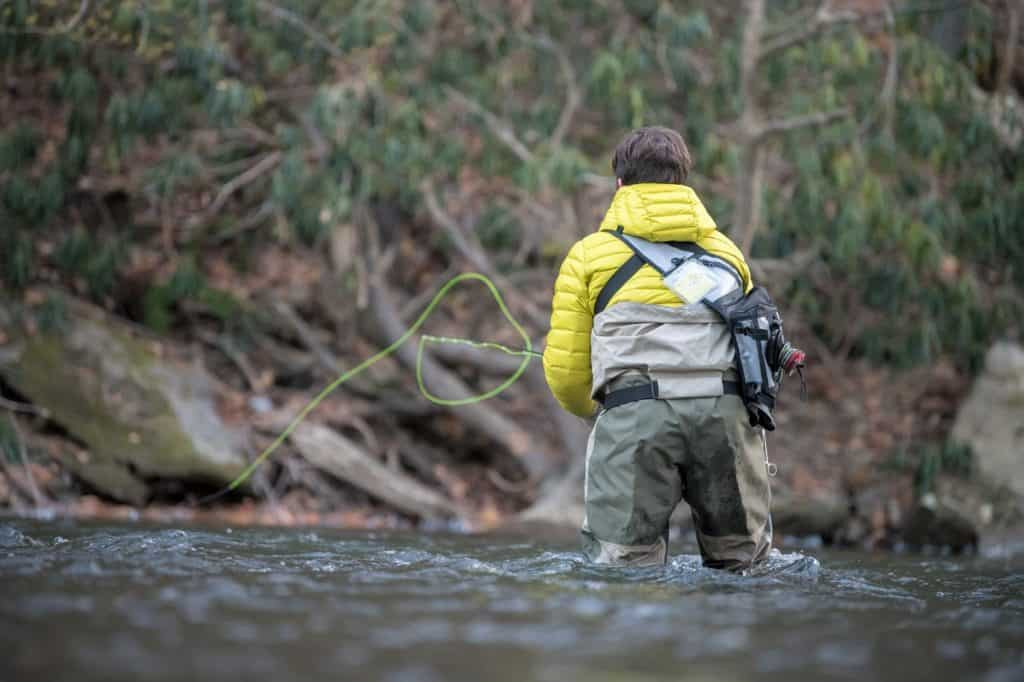 How to mend fly fishing line
How to mend fly fishing line
3.1. Key Habitats
What specific areas should beginner fly fishermen target?
Trout like to feed in areas where the current is not so fast where they burn a lot of energy but just fast enough where food drifts to them at a decent rate. Usually flows moving at the pace of a slow walk is roughly the optimal speed. In areas where fast water meets slow water you’ll find a noticeable line, usually where a line of bubbles or debris collects, called a seam.
3.2. Grid Method
How can you effectively fish a specific area?
Separate the main current into multiple threads or grids and fish the ones closest to you first. We prefer to position ourselves downstream and cast up. An upstream presentation helps stay out of their line of sight and gives us a better angle to cast. Approach as if you’re stalking the trout nice and slow. Use the natural noise of the stream to add some stealth. For example, wading through fast flows and riffles will help disguise your entrance.
4. Fighting and Handling Fish
How should you handle a fish once it’s hooked?
Applying proper pressure at the correct angle not only keeps trout hooked but also works to land them quicker, thus improving their survivability upon release. There’s a moment in the fight when the rod angle shifts from side pressure to pressure straight up high, and it’s usually a critical part of the battle. At flyermedia.net, you’ll learn best practices for ethical catch and release.
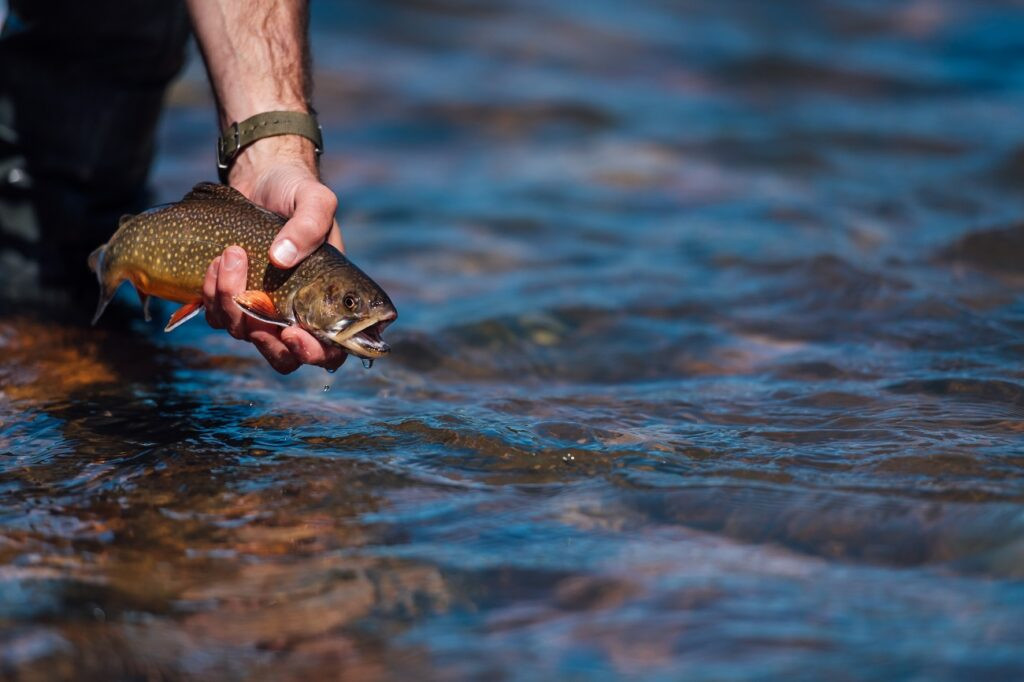 Fly fishing techniques
Fly fishing techniques
4.1. Fighting Techniques
What are the best techniques for tiring out a fish?
Side pressure is the most important angle to work a fish during the fight. In other words, if the fish is working upstream when hooked, you would have the rod downstream, semi-parallel to the water, and apply pressure back against the way the fish wants to swim. When you’re attempting to tire the trout out and get it in closer, side pressure is the way to go, but as the fish gets nearer to you a rod tip straight up high, with pressure from straight above, forces the trout to the top of the water. This is the time you want to attempt a fish landing as the pressure from the top pulls that fish into shallower water and the top of the water column.
4.2. Proper Handling
How can you ensure the fish’s survival after release?
When you’re catching and releasing your fish, properly handling these wild trout with immense respect is crucial to the health of future trout populations and generations of anglers to come. It is important to keep it under 30 seconds, from the time the fish hits the net till it is released. Wet hands remove the protective slime that coats all trout.
 Fly fishing and fly fishing
Fly fishing and fly fishing
5. Fly Selection for Beginners
What are the best fly patterns for beginner fly fishers?
Fly selection is intimidating. There are thousands of different flies for different scenarios and all of them have their place on the river. Nymphs, emergers, wet flies, dry flies, and streamer flies are the main types. Flyermedia.net simplifies fly selection, recommending patterns based on insect life stages.
5.1. Nymph Flies
What are nymph flies, and how are they used?
Nymphs are fly fishing flies that are both heavily weighted and unweighted fly patterns that represent aquatic insects that live at the bottom of the river under rocks, fallen trees, and sedimentary layers. Put simply, nymphs catch fish. Stonefly nymphs are excellent food sources for trout year round and the perfect fly to use for stoneflies is a heavily weighted Pat’s Rubber Leg.
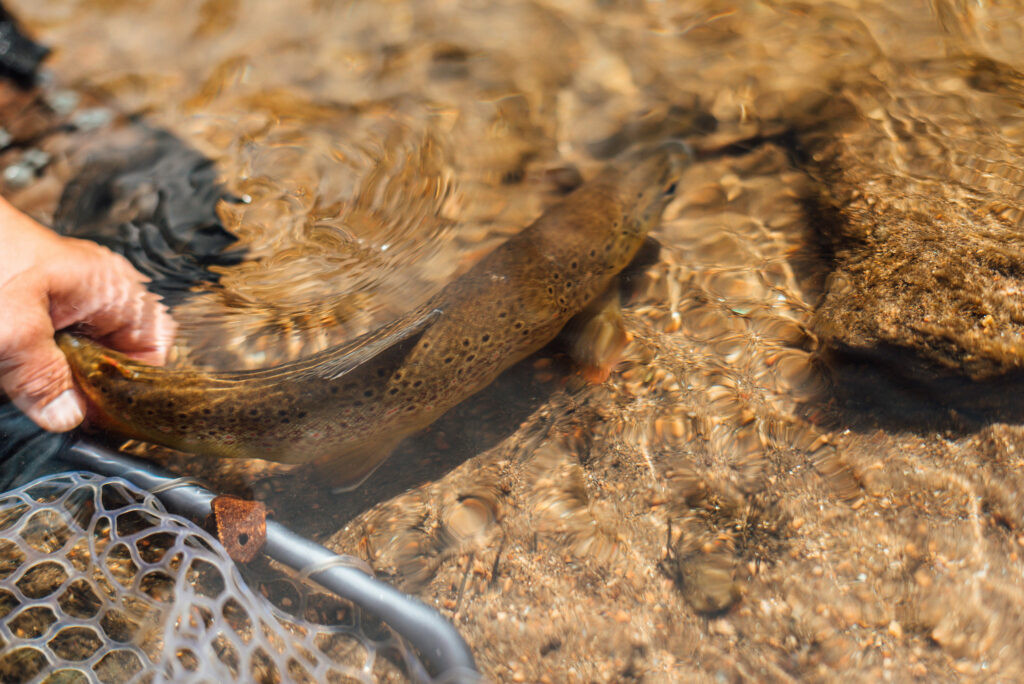 Fly fishing
Fly fishing
5.1.1. Nymph Rig Setup
How do you set up a nymph rig for beginners?
One of the easiest ways to set up a nymph rig is by starting with a 7.5-foot or 9-foot 3X tapered leader with a strike indicator set at 1.5 times the depth of the water. Next, add 18-24″ of 4X or 5X fluorocarbon tippet to the bend of the hook of the Pat’s Rubber Leg with another Improved Clinch Knot or Davy Knot. At the end of this piece of tippet, you will add your second fly.
5.2. Emerger Flies
What are emerger flies, and when should you use them?
Emerger fly fishing flies are lightweight flies designed to drift effortlessly with the current and hang just below the surface. When you see fish rising but they refuse to eat a traditional dry fly. Use an emerger fly pattern that hangs in the surface film of the water. Patterns such as the Klinkhammer Emerger and RS2 Emerger are excellent flies for the beginner fly fisherman to trick fish that refuse a traditional dry fly.
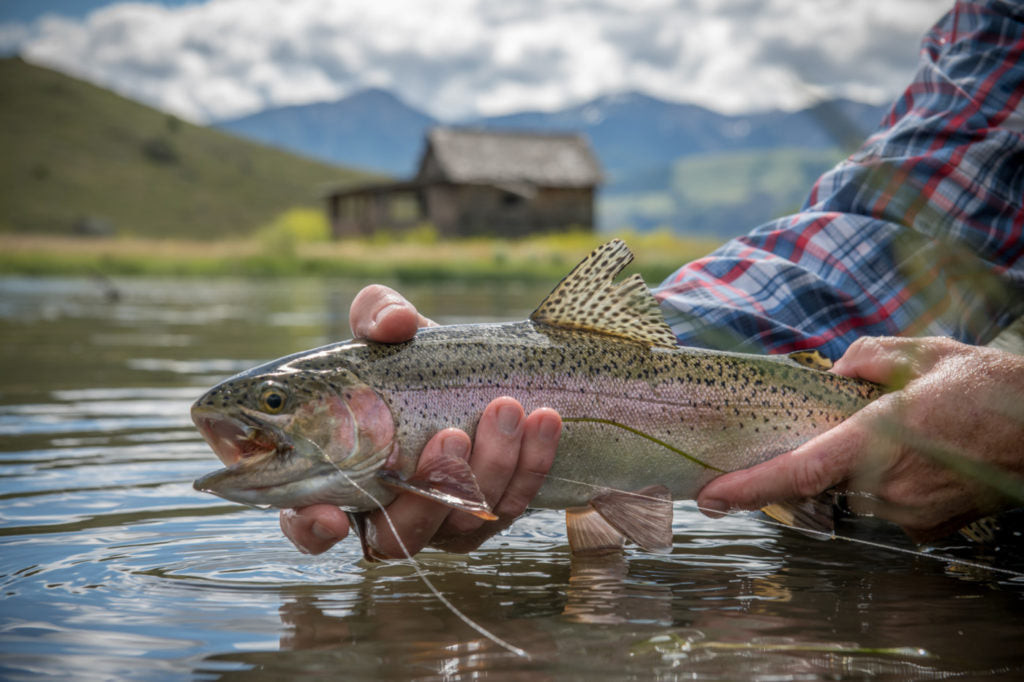 Fly fishing fly on fly fishing line
Fly fishing fly on fly fishing line
5.2.1. Emerger Fly Tactics
What are effective tactics for fishing with emerger flies?
One of my favorite tactics when fishing to rising trout is to use unweighted emerger fly patterns as a trailer to a small parachute dry fly. A trailer fly is a type of tandem, two-fly rig where you attach a fly with a section of tippet to the back end of the first fly. Trailer rigs are perfect for casting to feeding trout even after hooking a few from the same run on a dry fly. Trout will sometimes key into the dry fly and stop eating it.
5.3. Wet Flies
What are wet flies, and how are they fished?
Wet flies are similar to nymphs as they are all also fished underneath the surface of the water. Typically, wet flies or ‘soft hackles’ are characterized as flies that are tied with a soft hackle collar. Wet flies are used to imitate emerging insects or dead insects. In my experience guiding western rivers, wet flies are most effective during an insect hatch.
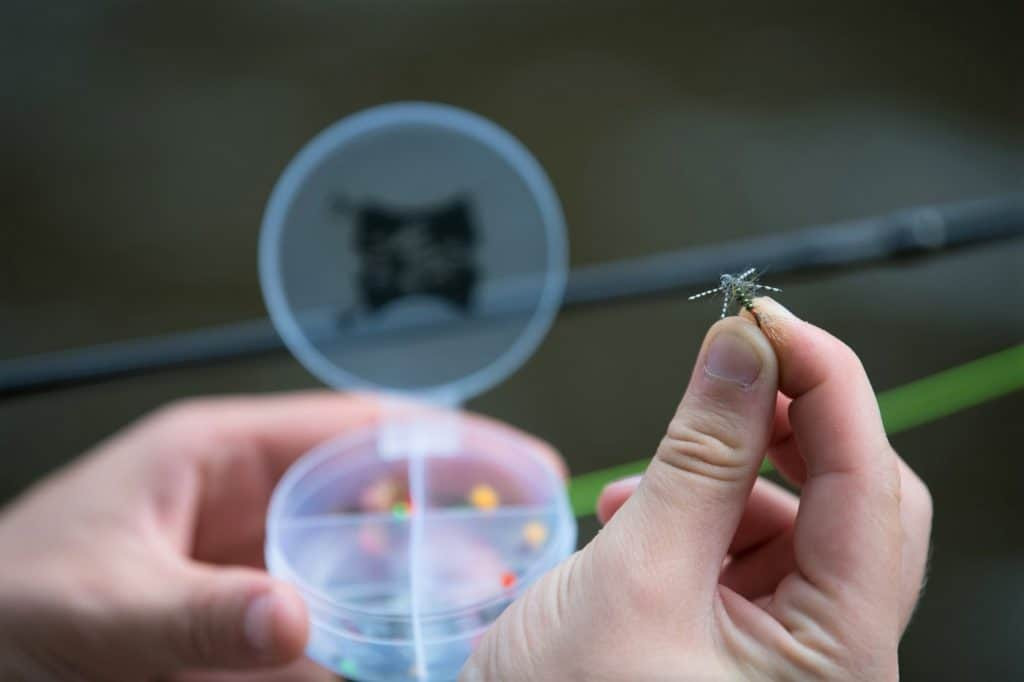 Fly fishing
Fly fishing
5.3.1. Wet Fly Fishing Tactics
What are some wet fly fishing tactics for beginner fly fishermen?
My general setup when fly fishing with wet flies is to fish them in a typical dry dropper fashion. Your first fly, could be a grasshopper pattern, stonefly pattern or even a larger parachute pattern. As the hatch starts to fade and there are fewer adults on the water to eat, trout will start to move back to the safety of deeper water.
5.4. Dry Flies
What are dry flies, and what insects do they imitate?
Dry fly fishing is what most people visualize as fly fishing. They are made to imitate a large variety of insects such as stoneflies, midges, caddis flies, mayflies, grasshoppers, ants, and beetles. Dry flies are made to imitate a large variety of insects such as stoneflies, midges, caddis flies, mayflies, grasshoppers, ants, and beetles.
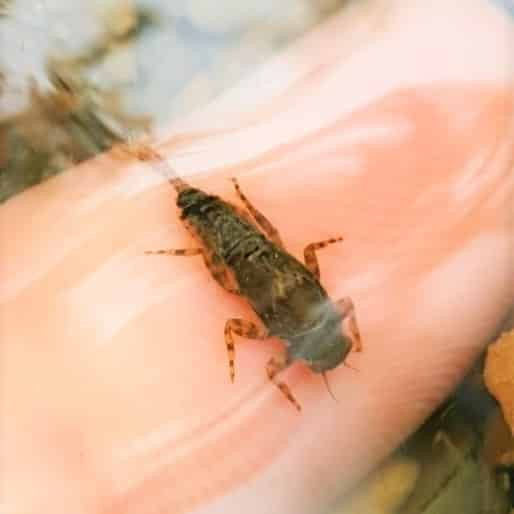 Fly fishing dry fly
Fly fishing dry fly
5.4.1. Dry Fly Basics
What are the basics of dry fly selection and strategy?
Parachute Adams and Elk Hair Caddis are two must have flies. The reason being, is I also carry a variety of sharpie pens with me. This way no matter what is hatching on the river, I am able to use the grey colored Adams, or I can color them to reflect the hatch more accurately. The most important part of dry fly fishing is matching the correct size of the insect; therefore make sure you have a bunch of different sizes available.
5.5. Streamer Flies
What are streamer flies, and how are they fished?
Streamers are flies that imitate bait fish. Nymphing streamers under an indicator is very effective below dams on tailwater where water is released on a consistent basis. The result is dead and dying baitfish that are drifting in the current. This scenario often gives anglers the opportunity to catch a fish of a lifetime.
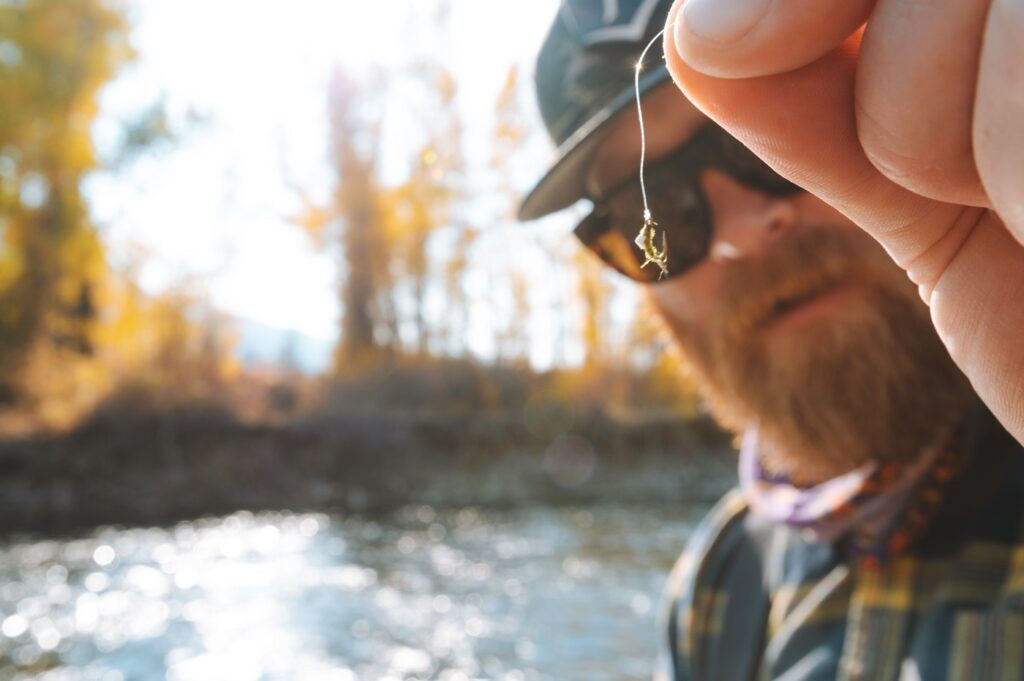 Fly fishing fly
Fly fishing fly
5.5.1. Streamer Fishing Tactics
How can beginners effectively fish with streamers?
While streamers are typically fished by making long cast and stripping the fly back in, they can also be nymphed and swung in the current. All that really matters is that there is enough fly line to swing the fly downstream of the angler. The angler then uses the tip of the fly rod to manipulate the streamer over shelfs, around rock piles, and in front of structure like log jams.
6. Fly Fishing Gear You Don’t Need Right Away
What gear items can you wait to purchase as you decide to invest a bit more into fly fishing?
When you’re just learning how to fly fish, there are certain items that you don’t necessarily need right away. Unless you plan to fly fish all winter and into the spring, you don’t need waders. Wet wading from June to September is refreshing. Fly boxes are also nice to have, but most of the time fly shops have small round puck shaped plastic containers that they provide when you buy flies.
7. Essential Fly Fishing Knots
What are the essential knots every fly fisher should know?
Mastering a few key knots is crucial for fly fishing. The Improved Clinch Knot is excellent for attaching flies to your tippet, while the Surgeon’s Knot is perfect for joining sections of tippet. According to the experts at the International Game Fish Association (IGFA), these knots maintain high breaking strength.
8. Fly Fishing Resources at flyermedia.net
Looking for more in-depth information and resources about fly fishing?
At flyermedia.net, we offer a comprehensive range of articles, tutorials, and guides to enhance your fly fishing journey. Whether you’re looking for the latest news in aviation, pilot training options, or career opportunities, flyermedia.net has you covered. Visit our site to explore the endless possibilities in the world of flight and angling. Explore detailed guides on gear selection, casting techniques, fly patterns, and fishing locations.
For those passionate about aviation and angling, flyermedia.net provides valuable insights into both worlds. We are committed to providing high-quality, accurate, and engaging content. Learn about top aviation schools like Embry-Riddle Aeronautical University, explore career opportunities in the aviation industry, and stay updated on the latest trends in aviation technology.
9. Why Choose flyermedia.net?
What makes flyermedia.net a valuable resource for fly fishing enthusiasts?
flyermedia.net stands out as a comprehensive resource for fly fishing, offering a blend of expert advice, detailed guides, and up-to-date information. Our platform is designed to cater to both beginners and experienced anglers, providing valuable insights and resources to enhance your fly fishing journey.
We provide detailed guides on gear selection, casting techniques, fly patterns, and fishing locations. This ensures that whether you are setting up your first fly rod or looking to refine your skills, you have the knowledge you need at your fingertips. Our experienced contributors share their expertise, offering practical tips and advice that you can trust.
10. Frequently Asked Questions (FAQs)
Have more questions about fly fishing?
Here are some frequently asked questions to help you get started:
- What is fly fishing, and how does it differ from other types of fishing?
- What are the essential pieces of fly fishing gear I need as a beginner?
- How do I choose the right size and weight of a fly rod?
- What is the best type of fly line for beginners?
- How do I cast a fly rod, and what are the basic techniques?
- What are the different types of flies, and how do I select the right one?
- How do I read the water to find the best spots for fishing?
- What are the best techniques for fighting and landing a fish?
- How do I handle a fish properly to ensure its survival after release?
- Where can I find more resources and information on fly fishing?
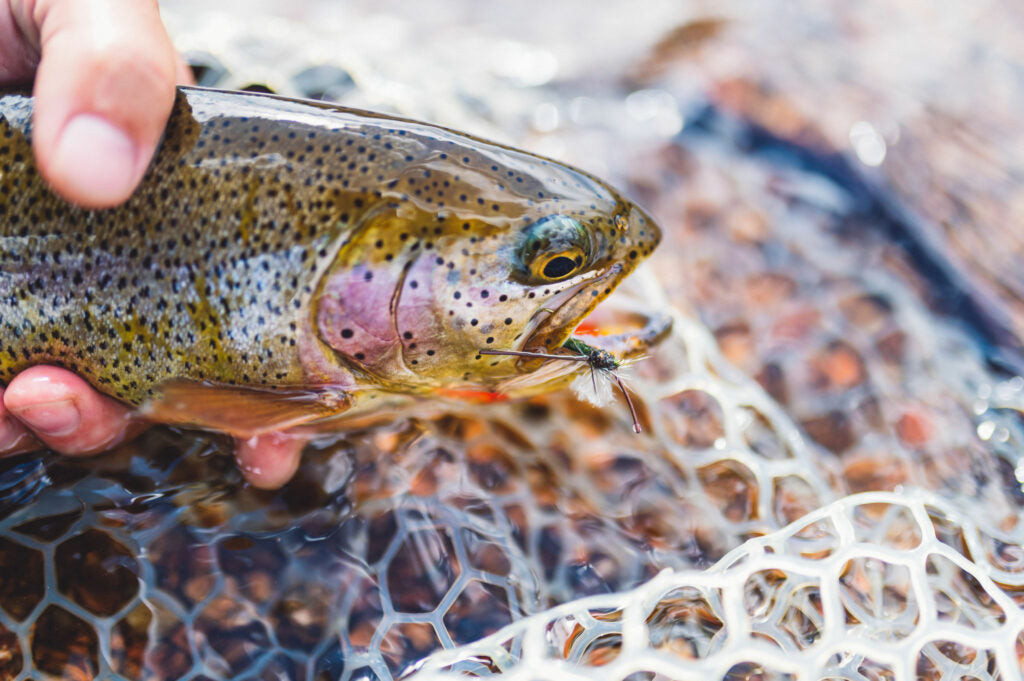 Fly fishing
Fly fishing
Ready to start your fly fishing journey? Visit flyermedia.net for more information on gear, techniques, and destinations. Whether you’re interested in pilot training, aviation news, or exploring career opportunities, flyermedia.net is your go-to resource for all things aviation and angling. Contact us today and take the first step towards your fly fishing adventure.
